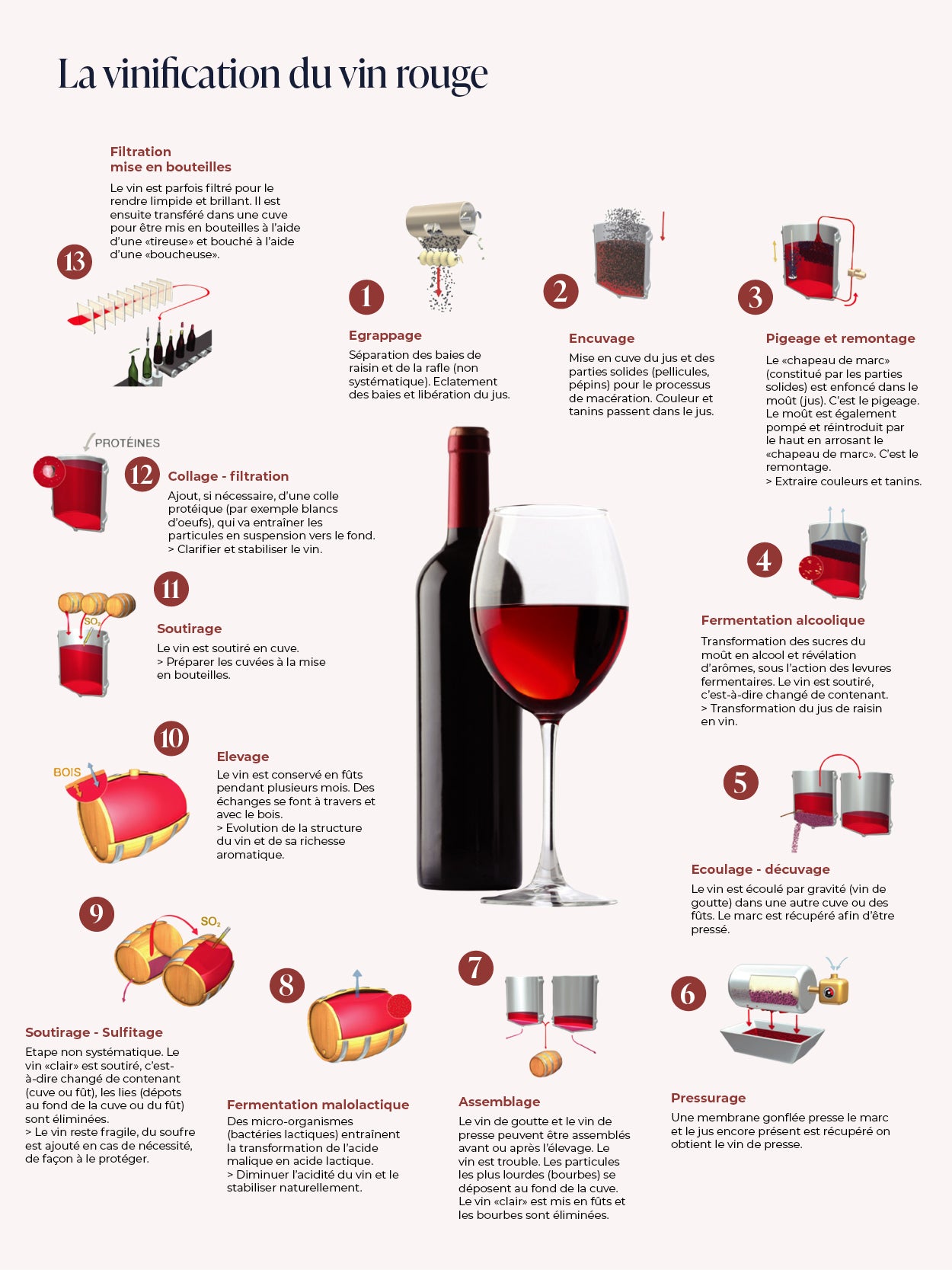Elaboration
How is red wine produced?
Red wine vinification involves a number of mandatory steps and/or those chosen by the winemaker: harvesting, destemming, crushing, alcoholic fermentation, maceration, pressing, malolactic fermentation, ageing, clarification and bottling.
Red wine vinification: a meticulous 11-stage process

1. Harvesting and grape selection
The grapes are harvested and picked when ripe between August and October, either by hand or by machine. The grapes are selected to remove any bunches that are of inferior quality or too damaged.
2. Destemming
When the bunches are destemmed, the grape berries are separated from their stalks, the woody stems of the bunch.
3. Crushing
Not mandatory, crushing facilitates the extraction of the must. The tool used lightly bursts the berries. At the end of the crushing process, the must is recovered from the grapes. Foot crushing remains a tradition and part of winemaking folklore, this technique has gradually been replaced by mechanical presses, which are more efficient and hygienic.
5. Alcoholic fermentation in vats
Yeast is added to the grape must, or the naturally present (indigenous) yeasts are allowed to transform the sugar into alcohol. Throughout fermentation, the temperature is controlled and the process is monitored to ensure that it runs smoothly.
This is when the ageing process begins, with several steps that are mandatory and/or chosen by the winemaker. This period is essential for the wine. Ageing stabilises, clarifies and enriches the wine's aromas. Some of the stages may occur several times or at different times.
5. Maceration
When the skins come into contact with the juice, it takes on its brilliant shades. This is why white wine does not require this step. Skin maceration can be carried out at different times during the winemaking process: at the same time as fermentation, or between crushing and pressing. It can last from a few hours to several weeks, depending on the wine.
6. Running off
The draining step consists of filtering the wine of its skins and pips.
7. Pressing
A press is then used to extract the juice, which is collected in the lower part of the press known as the "maie".
8. Malolactic fermentation
This second fermentation takes place during maturation in vats or barrels.
9. Racking
Fermentation produces a deposit of yeast at the bottom of the vat. Another maturing operation, racking, consists of separating the wine from its lees and particles by transferring it to another vat, cask or barrel, one or more times.
10. Clarification
During the winemaking process, the aim of clarification is to eliminate any deposits still present in the red wine. This stage is not compulsory. There are several ways of clarifying red wine: by filtration, fining or sedimentation.
11. Bottling
Bottling is the process of packaging red wine. It takes place in several steps: :
- Tirage, action of filling the bottles with wine.
- Capping with a cork, glass or syntheic fibre stopper.
- Dressing (capping, labelling or even boxing the bottles).

Aveine's tip
Other steps can be added to these main steps in red wine vinification, such as blending, which involves mixing several vats of wine.
